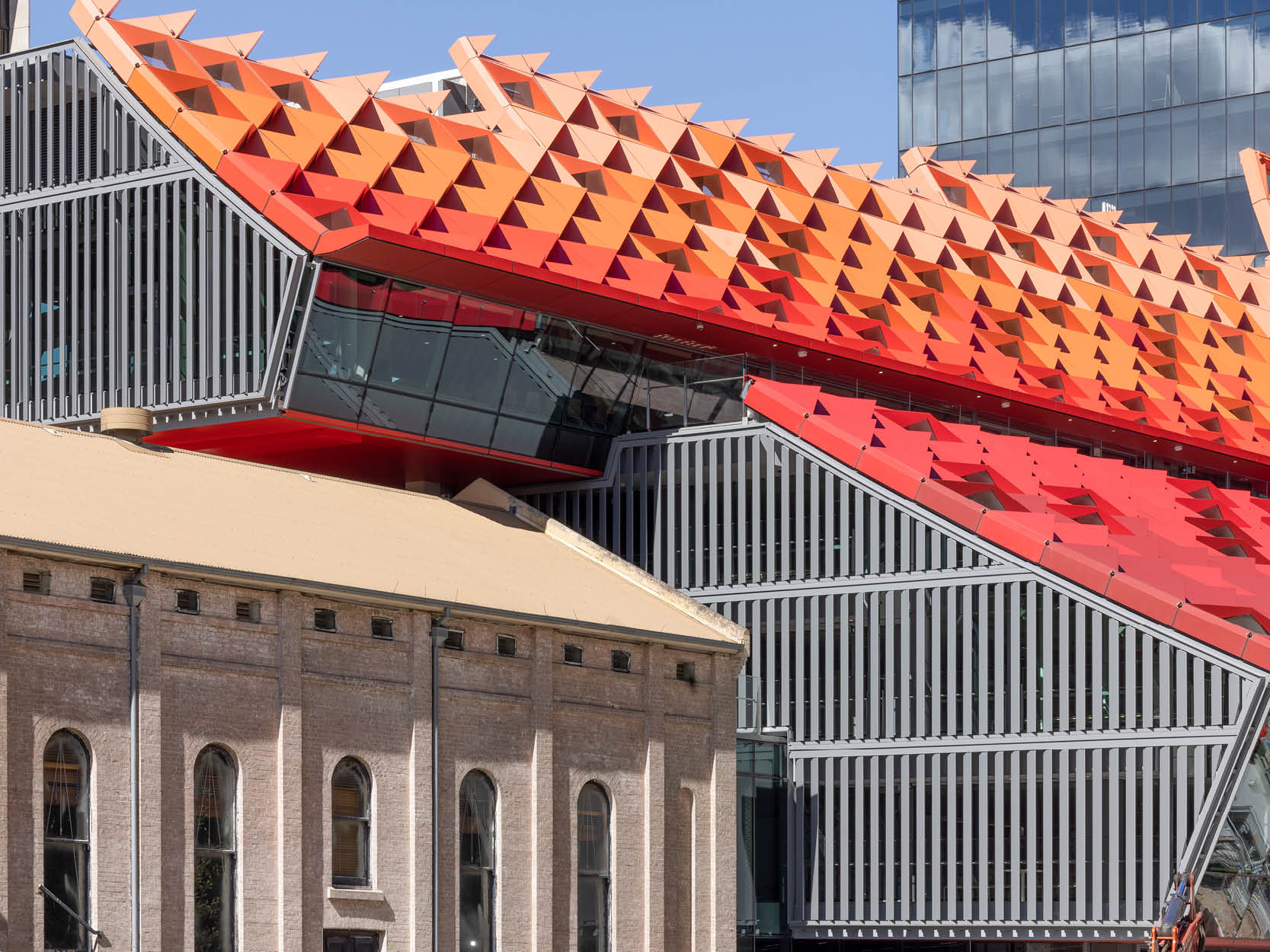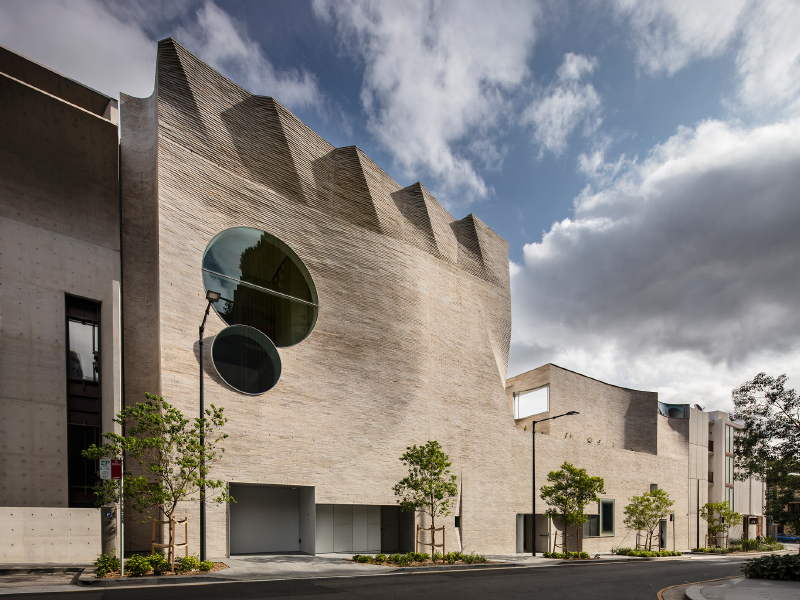-
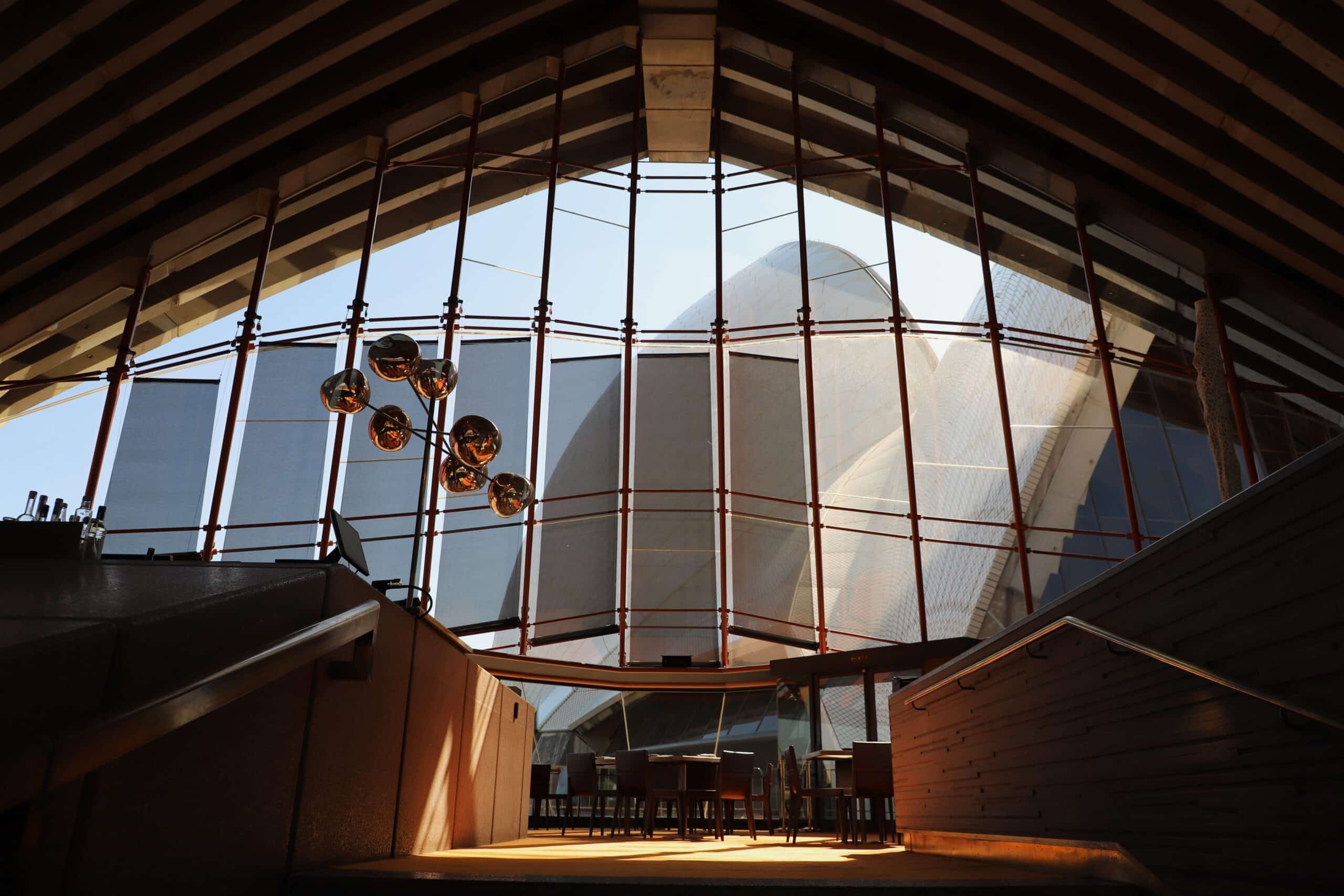
MEDIA: Climate-Responsive Ingenuity in Hospitality Design
-
Climate-Responsive Ingenuity in Hospitality Design
By Helena Morgan, Facility Management Magazine,
19 November 2024 -
Bennelong restaurant is a cherished city hotspot boasting enviable views of the harbour, yet it is a victim of low winter sunlight.
In a bid to stabilise the internal temperature and enrich the user experience, Tilt was engaged to design sun-shading in the form of automated blinds that prioritised functionality, seamlessly integrated with the windows and refrained from obscuring harbour views.
Tilt subsequently delivered a masterclass on the possibilities of energy-efficient industrial design at a heritage-listed building, with the project nabbing a 6-Star Green Star performance rating.
“Bennelong required a system to reduce the impact of the sun from the northern aspect,” says Tilt designer manager and lead designer on the projectl, Kieran Barker.
“This project was a really effective way to help Bennelong cut back some of that heat,” says Barker, who has experience in operable, automated and smart design projects across landscape architecture and public art.
The design team pursued a reliable and efficiently operated sun-shading solution that achieved the two-tiered purpose of maintaining aesthetic value and slashing thermal heat absorption.
-
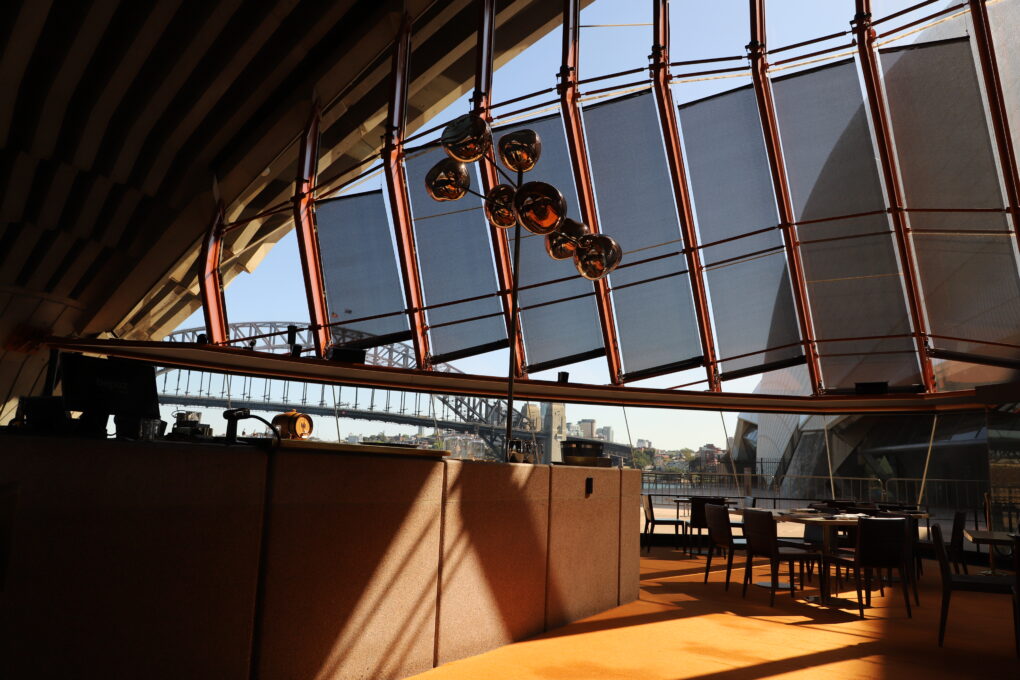
-
Goal of reducing thermal impact
The project had pre-pandemic origins dating back to 2019, when Barker’s division at Tilt was approached to assist in the realisation of a sun-shade installation. The project team conducted regular consultations with the Design Advisory Panel (DAP) and Bennelong owners, the Fink Group.
“We worked with them to develop a system that could ultimately reduce the thermal impact they were experiencing on the north side of the building,” recalls Barker.
Before the pandemic, the team developed a system that relied on motors to raise and retract blinds and produced multiple prototypes. “Once that was approved, we moved onto a production-ready prototype we installed just before COVID,” says Barker. Fink Group was receptive to this prototype, but lockdowns demanded a halt on the complete delivery of the project; however, it resurfaced in the past year.
-
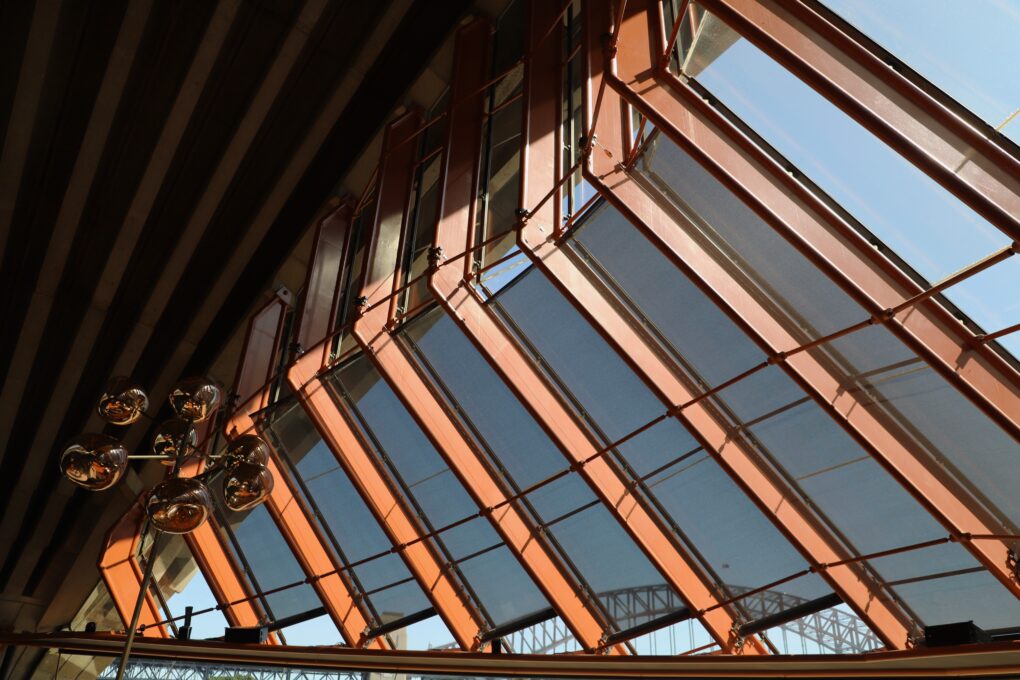
-
Navigating the specific criteria of heritage buildings
Although the team understood the need to comply with the specific criteria of operable technology, Barker says Bennelong demanded a knack for problem-solving and adherence to specifications.
“This project was quite unique in that there were a lot of criteria that stated we couldn’t make any changes that may interfere with the look and feeling of the building,” he says.
The heritage value prompted the team to pivot and improvise with the rollout of the installation. “We needed to ensure we didn’t scratch any paint, drill any holes or do any destructive works to the building as it was,” says Barker.
A saving grace emerged in the form of 3D scans of the building. These scans absolved the team from the time-consuming task of measuring the steelwork and glass while keeping the restaurant operational.
“We had a very accurate 3D scan that we could work off just to rough everything out in our 3D modelling programs,” says Barker. “From there we developed a system that could clamp onto the steel mullion, the upright sections of the window framing.”
The team designed the blinds to allow for adjustability and accommodate the high tolerance and durability of the steel mullions. The design also capitalised on the power of geometry to conceal the clunkiness of the motors and ensure the blinds remained tight and taut.
-
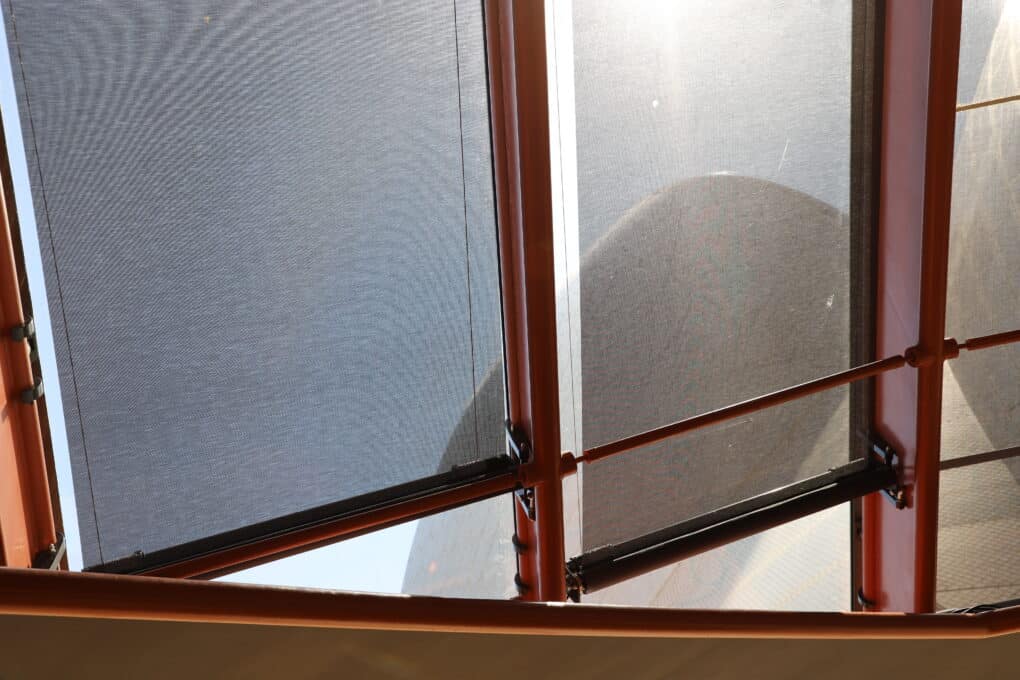
-
“When the blinds are down, there are very few components of hardware mounted up at the top of the mullion, so by using two motors per blind, we mounted those down low, basically at the base of the window where there’s a horizontal bulkhead,” says Barker.
The custom clamping system avoided drilling into the building and ensured the design slotted into the aesthetic of the building, so as to not make the blinds jarring or disarming. Energy efficiency was also met, as the blind fabric eliminated solar absorption by 76 percent.
The DAP dictated certain specifications such as the hardware and colour of the panels to meet heritage considerations. “They had a big hand in the colour of the fabric and the hardware used to keep it faithful and in line with the original architecture of the building,” says Barker. “They were excited to have the opportunity to contribute and know the blinds are serving a good and a functional purpose.”
-
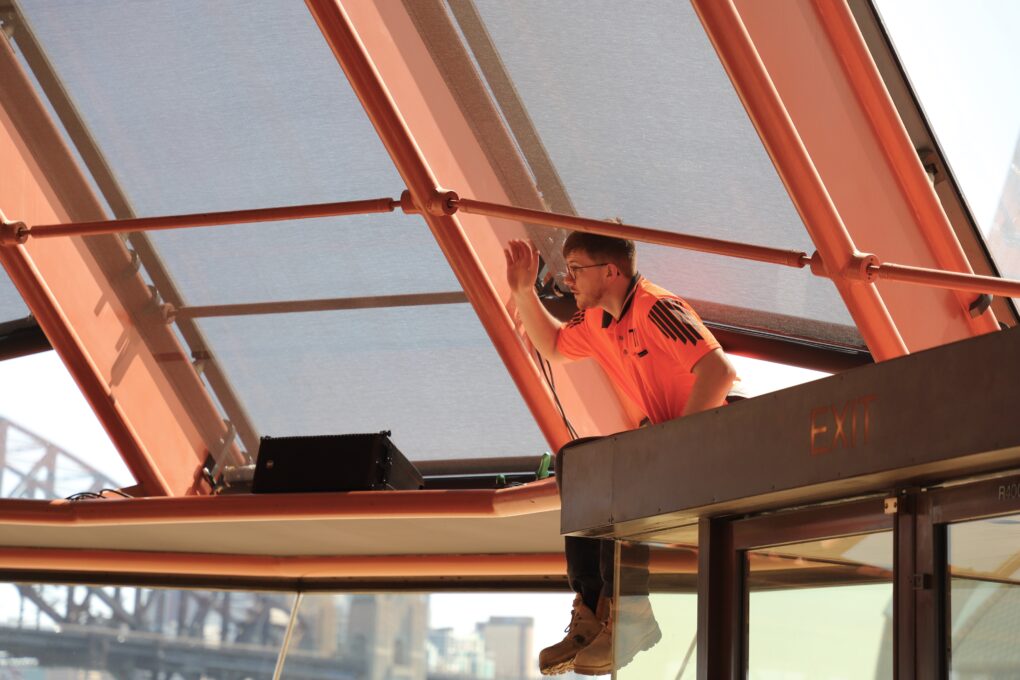
-
Smart technology of the blinds
The delivery of the operable blinds presented numerous angles of attack.
“There’s a lot of different ways you could have gone about it depending on the purpose of each blind,” says Barker.
“Fink really wanted to target the main area base of the windows that would be getting the most sun, and just to be able to have as much coverage of that in as little time as possible,” he says. “The idea was to have all the blinds come up and stay up for the majority of sunset and then they would all come down together.”
Sourcing reliable motors and control systems therefore emerged as imperative, Barker underscores.
“A lot of the time we’ve used operable motors for other components like big skylights and sliding roofs, and we’ve wired them all back into one control system that has a wireless remote any of the staff can operate,” says Barker.
It then became a process of sequencing the blinds in unison to create a fluid cascading effect. Bennelong opted for a manual system that allows staff to operate it at their discretion.
“Ultimately Bennelong wanted the flexibility to operate it manually and send it up when required,” says Barker. “If you did need to do it when there are people there, it’s not distracting anyone other than if you glance over and witness the blinds coming down.”
The operable blinds do not dampen the bustling energy of Bennelong but instead reinforce the restaurant’s offering as a serene and peaceful dining experience. The automated technology accentuates the attributes of the public space, particularly the harbourside views.
-

-
Climate-responsive projects on the horizon
Barker predicts climate-responsive projects will increase in frequency and occupy greater space in the design zeitgeist as buildings work to achieve the coveted NABERS rating.
Projects that have recently earned this rating include the Surgical Treatment and Rehabilitation Service (STARS) in Brisbane. STARS is the first hospital in Australia to receive a 5-Star Green Star performance rating. Canberra’s Critical Services Building within the Canberra Hospital campus also received the honour of Australia’s first fully electric hospital.
Barker cites the immense rewards of working on public space projects that meet energy efficiency, functionality, and aesthetics. The design team is driven to devise solutions that elevate the experience of a space and make it conducive to relaxation and comfort.
“They’re really engaging to work on, but also it’s nice to know that what you’re doing has a very functional outcome that’s going to benefit all the people in the space,” concludes Barker.
-

Tilt subsequently delivered a masterclass on the possibilities of energy-efficient industrial design at a heritage-listed building, with the project nabbing a 6-Star Green Star performance rating.
-
Related articles
-
Latest news and insights
-
Enquiries
New business — studio@tilt-industrialdesign.com
Careers — studio@tilt-industrialdesign.com
Press & media — marketing@tilt-industrialdesign.com
We acknowledge the Traditional Owners of Country throughout Australia and their continuing connection to land, waters and community. We celebrate the value and diversity of First Nations art forms, cultures and languages, and their ongoing significance today. We pay respect to Elders past and present.
